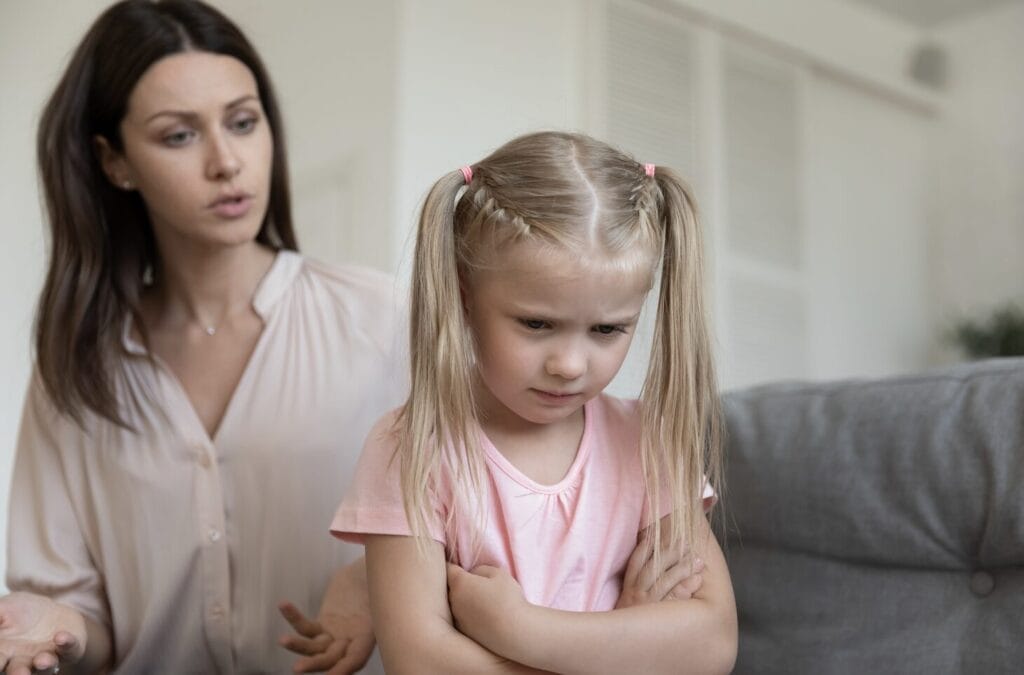Embarking on an Emotional Odyssey: Understanding Your Child’s Emotional Landscape
As parents, we often embark on a complex odyssey, navigating the emotional fluctuations of our children. These ups and downs can be perplexing, challenging our patience and understanding.
“The way we talk to our children becomes their inner voice.” This profound quote by Peggy O’Mara encapsulates the significance of our approach to our children’s emotional world. At KidSense Therapy Group, we emphasize empathy and support as keystones in understanding and managing these emotional journeys.
What emotions have you observed in your child recently, and how have you responded? Reflect on these moments and consider the impact of your interactions.
Decoding Emotional Fluctuations in Children
Emotional fluctuations in children are like the ebb and flow of tides – natural, yet sometimes turbulent. These are variations in moods and feelings that occur due to a variety of factors, including developmental changes, environmental influences, and individual temperaments.
The Developmental Dance of Emotion Regulation
As children grow, their ability to regulate emotions develops gradually. This developmental process is complex and influenced by both biological maturation and environmental experiences. According to the American Psychological Association, emotional regulation skills continue to evolve well into adolescence.
Normalizing the Emotional Ebb and Flow
It’s important to recognize that emotional fluctuations are a normal part of growing up. Every child experiences them, and they are not indicative of poor parenting or problematic children. Embracing this understanding can alleviate some of the stress and pressure felt by both parents and children.
How do you usually react to your child’s emotional changes? Are there ways you could adjust your approach to better support their developmental needs?
Unraveling the Emotional Tapestry: Recognizing Patterns in Your Child’s Emotions
Identifying recurring patterns in your child’s emotional landscape is akin to deciphering a complex, yet beautiful tapestry. These patterns can provide invaluable insights into their inner world and developmental stages.
“There are no seven wonders of the world in the eyes of a child. There are seven million.” – Walt Streightiff. This quote reminds us of the rich emotional universe each child possesses, full of nuance and wonder.
Have you noticed any repetitive emotional responses in your child? What do these patterns suggest about their emotional needs and experiences?
Emotional Milestones Across Ages
Emotional development varies by age. Toddlers often exhibit intense emotions as they learn to navigate their feelings. School-aged children begin to understand others’ emotions, while teenagers experience a deeper complexity in emotional regulation. The Child Development Institute provides detailed insights into these stages.
Building Bridges with Words: Effective Communication Strategies with Children
The art of communicating with children about their emotions is a delicate balance of speaking and listening. It’s about creating a safe space where they feel heard and understood.
The Power of Active Listening
Active listening involves more than hearing words; it’s about engaging with the child’s feelings. Reflect back what they say and show empathy. “To listen is to love,” goes a common saying, emphasizing how listening can build trust and connection.
Conversations That Count: Age-Appropriate Dialogue
The language we use should evolve with our child’s age. For toddlers, simple and direct phrases help. With older children, encourage them to describe their feelings in their own words. The Psychology Today website offers practical examples of how to adjust your communication as your child grows.
Think about the last emotional conversation you had with your child. What worked well, and what could have been done differently?
Cultivating Calm: Teaching Emotional Regulation Skills to Children
Equipping children with emotional regulation skills is akin to giving them the tools to navigate life’s stormy seas. It’s a process that requires patience, understanding, and consistent practice.
“The greatest gifts you can give your children are the roots of responsibility and the wings of independence.” – Denis Waitley. This empowering perspective underlines the importance of teaching children to manage their emotions.
What steps have you taken to help your child develop emotional regulation skills? How do you celebrate their progress in this area?
Strategies for Different Ages
For toddlers, simple breathing exercises and identifying emotions in stories can be effective. School-aged children benefit from problem-solving games and discussing emotions in daily scenarios. Teenagers can be encouraged to practice mindfulness and journaling. The American Psychological Association offers additional age-specific strategies.
Creating a Nurturing Nest: The Role of a Supportive Environment in Emotional Development
A supportive home environment is the bedrock upon which children build their emotional skills. It’s about creating a safe space where emotions are respected and understood.
Establishing a Routine of Emotional Safety
Consistency and predictability in the home go a long way in providing emotional security. Regular routines, clear expectations, and consistent responses help children feel secure and understood. According to HealthyChildren.org, a predictable environment can significantly reduce anxiety in children.
Positive Reinforcement: Cultivating Emotional Growth
Acknowledging and praising your child’s efforts in managing their emotions is key. Positive reinforcement not only encourages them but also reinforces their self-esteem and confidence in handling their feelings.
Reflect on your home environment. How does it contribute to or hinder your child’s emotional development? Are there aspects you could improve to foster a more supportive atmosphere?

Discerning the Need for Guidance: Recognizing When to Seek Professional Help
As parents, it’s sometimes challenging to determine when to seek professional help for your child’s emotional challenges. Knowing the signs that suggest the need for additional support can be a crucial step in your child’s development.
“It takes a village to raise a child.” This African proverb underscores the importance of community support in nurturing a child, including professional assistance when needed.
Have you noticed any persistent or escalating emotional challenges in your child that seem beyond typical developmental phases? How have these observations influenced your thoughts on seeking professional guidance?
Key Indicators for Professional Intervention
Signs that might indicate the need for professional support include persistent sadness, frequent tantrums or outbursts, withdrawal from social interactions, or drastic changes in behavior and mood. The American Psychological Association provides comprehensive guidelines on identifying these signs.
Introducing KidSense Therapy Group’s Services
KidSense Therapy Group offers a range of therapeutic services tailored to children’s unique needs. Our approach includes individualized assessments, family involvement, and evidence-based interventions. If you’re considering professional help, visit our services page for more information.
Embracing Family Resilience: Navigating Emotional Challenges Together
The emotional well-being of a child significantly impacts the entire family. Recognizing and addressing the collective needs of the family is crucial in navigating these challenges effectively.
Support Strategies for Parents and Siblings
It’s essential for parents and siblings to have strategies to cope with and support each other. Open communication, family meetings, and shared activities can strengthen family bonds and provide mutual support. Encouraging siblings to express their feelings and concerns is equally important.
Reflect on how your family currently copes with emotional challenges. Are there practices you could adopt to enhance support and understanding within your family unit?
Creating a United Front
Working together as a family unit fosters a supportive environment that benefits everyone. This unity can be a source of strength and resilience during challenging times.
Embracing the Emotional Journey: Summing Up Our Path Forward
We’ve explored the multifaceted world of children’s emotions, uncovering strategies and understanding that can guide us in supporting their emotional ups and downs. The journey is complex, but with patience and empathy, we can navigate it successfully.
“To understand your children’s feelings, you must put yourself in their shoes.” This quote encapsulates our final message: empathy and understanding are key in helping children navigate their emotional landscapes.
What are the most significant takeaways for you from this exploration? How will you implement these insights in your family’s journey?
Stay Connected for More Insights
For ongoing support and resources, follow KidSense Therapy Group. We’re dedicated to providing families with the tools and understanding needed to support emotional development.
Reach Out for Personalized Support
If you’re seeking more personalized guidance, our team is here to help. Please schedule a consultation or attend one of our workshops to dive deeper into supporting your child’s emotional growth. Visit our contact page for more information.

